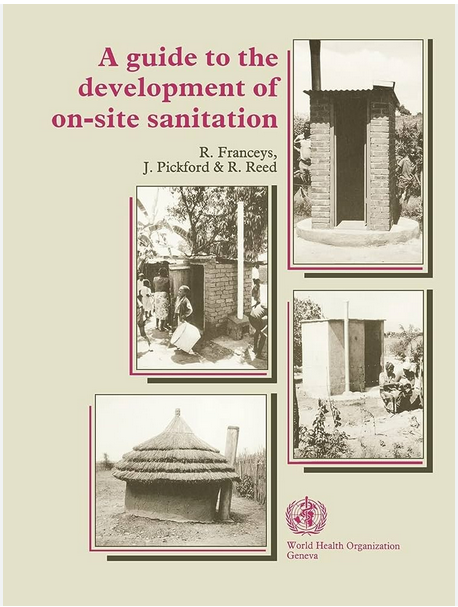A Guide to the Development of On-Site Sanitation
Author: Franceys, R., Pickford, J., Reed, R.
Year: 1992
Publisher: WHO
There has been considerable awareness of community water supply needs, but the problems of excrete and wastewater disposal have received less attention. In order to focus attention on these problems, “sanitation” became used and understood by people worldwide to refer only to excrete and wastewater disposal. A WHO Study Group in 1986 formally adopted this meaning by defining sanitation as “the means of collecting and disposing of excrete and community liquid wastes in a hygienic way so as not to
endanger the health of individuals and the community as a whole” (WHO, 1987a). Hygienic disposal that does not endanger health should be the underlying objective of all
sanitation programmes.
The cost of a sewerage system (which is usually more than four times that of on-site alternatives) and its requirement of a piped water supply preclude its adoption in the.many communities in developing countries that lack adequate sanitation. On-site disposal, dealing with excrete where it is deposited, can provide a hygienic and,satisfactory solution for such communities
Rating
Would you like to see other resources here?
Give us your feedback"*" indicates required fields
Still have questions?
You could not find the information you were looking for? Please contact our helpdesk team of experts for direct and individual support.


